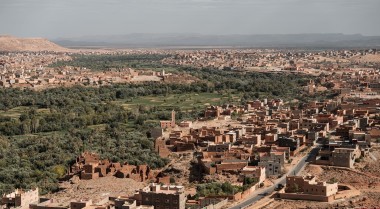
Courage in Crisis: How young women in Mongolia are leading climate action
In Mongolia, climate change is hitting vulnerable communities the hardest, with young women in rural areas among those facing the greatest challenges. As extreme weather events intensify, they are not only bearing the brunt of the crisis but also stepping up as leaders of change.
In this interview, Khishi Enkhbayar, co-founder of the United Nations Association of Mongolia, sheds light on how women and girls drive Mongolia’s climate movement—advocating for climate justice, mobilising communities, and ensuring their indispensable voices are heard on the global stage.
How is climate change affecting young women in Mongolia, particularly in rural areas or vulnerable communities? What challenges do they face?
Mongolia is one of the countries most affected by climate change. Over the past 70 years, it has seen an average temperature increase of 2.4°C, and 77% of the land is now degraded due to overgrazing and climate change. This directly affects the livelihoods of a third of Mongolia’s population, who are nomadic. Nomadic women, in particular, face increased stress and violence during dzud, an extreme weather event that is becoming more frequent due to climate change.
As we know, climate change disproportionately impacts the most vulnerable, with children and youth bearing the heaviest burden. In Mongolia, for example, the flash floods we experienced last summer primarily affected people in the ger districts—informal settlements on the outskirts of the city. Many migrants settle in these areas after losing their livelihoods during dzud. This makes it clear that climate justice should be a priority in policy moving forward as we grapple with the increasing, cross-cutting effects of climate change.
What initiatives or actions are young women in Mongolia leading to address the impacts of climate change?
Over the past years, young climate activists, myself included, have continuously advocated for ambitious climate action at local, national, and global levels across all sectors, generations, and contexts. Mongolia has been no exception.
From innovative initiatives like 100% biodegradable air purifiers made from discarded wool to mass mobilisation for tree-planting activities supporting the President of Mongolia’s Billion Tree Initiative, youth are taking action for the climate every day. Women and girls are at the forefront of Mongolia’s climate movement. The UN Youth Delegate - Environmental Leadership Program, which our organisation spearheads, sends youth delegates to the UNFCCC COP each year, as well as to desertification and biodiversity COPs, ensuring that Mongolian youth have a voice on the global stage. All delegates so far have been young women, chosen for their passion and leadership capabilities. They are directly affected by climate change, especially in vulnerable communities, and bring unique perspectives on sustainable solutions. Their inclusion ensures that policies are more equitable—addressing the needs of all genders and future generations—while empowering them as leaders in the fight against climate change.
We continue to see the active participation of women and girls across all levels, including through the recently established National Environmental Youth Council. Members of the council are strongly advocating for the inclusion of the Gender-Climate-Peace nexus in Mongolia’s Women, Peace, and Security (WPS) National Action Plan (NAP), the consultation process for which began last month. Their involvement ensures that young women’s voices help shape this critical framework, which will define Mongolia’s national policy on gender, peace, and security over the next half-decade.
What kinds of support and resources do young women need in order to amplify their efforts, and who should be providing this support?
Increased support for women and girls in building their capacity, strengthening their networks, and accessing equitable funding is crucial to sustaining their efforts in addressing climate challenges and building peace in the region. Too often, I see young women burn out as they face growing constraints and limited support. Many who lead grassroots initiatives or sustainable startups are not adequately paid for their work—or even have to dip into their own savings—while also navigating traditional caregiving responsibilities for their parents or children.
These women are deeply passionate and committed to making a change, yet the lack of adequate support often leads to burnout or even serious health issues. The challenge they are taking on is one of the greatest of our time. That’s why governments, donors, and international organisations must step up their support so that we can overcome this crisis together.

